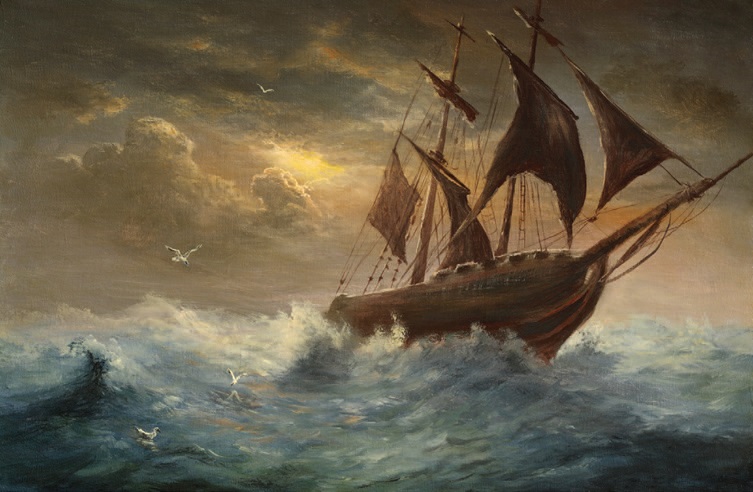Troubled Waters
Evan Zabawski | TLT From the Editor March 2011
A small film of oil can have a calming effect.

The next time you’re at sea, know that the captain is not pulling a naïve tribologist’s leg when he suggests lubricating the rough waters.
www.canstockphoto.com
One of my favorite pastimes is reading historical non-fiction dealing with the early exploration of new lands, particularly the Antarctic. A common setback these explorers faced far before they arrived in the unchartered waters came in the form of hurricanes. Hurricanes brought about the large winds that cause massive waves that could either extensively damage or sink the ship. Trying to survive this onslaught in a relatively small vessel, several days sailing distance from the nearest shore, took an iron will, a strong ship, a stout crew and a small container of oil.
The oil that was commonly used was olive oil, cod liver oil or whale oil, and it was metered out by using either an oil-filled bucket with a small hole in it, or a canvas bag filled with oil-soaked oakum.
The container was then towed from the bow on the side of the ship facing the rough weather. This side was always referred to as the weather bow, and to say that one was ‘under the weather bow’ was to imply a very gloomy prospect. The expression has since been truncated to remove the nautical reference, but I think we can all appreciate now why feeling ill is referred to as feeling under the weather.
The effect of releasing the oil onto the surface of the sea is almost immediate and rather amazing. The crests of waves will cease breaking, the bilge pumps start gaining, and the decks begin drying out. With the usage typically amounting to only half a gallon per hour, it was not difficult for ships to overcome several days of continuous storm without significantly depleting their supply.
To understand how oil calms the waves, we must first learn how waves are formed. Waves form when the water moves and creates ripples, then the ripples give the wind some grip (tractive force) and the ripples grow into wavelets. Once wavelets are high enough, the wind becomes turbulent and starts transferring its energy to the waves. The rougher the water, the easier it is for the wind to transfer its energy.
Once a wave gains height, the passage of air imparts its velocity to the top, or crest, of the wave, yet the velocity is resisted in the Lower masses, or trough, due to inertia. Eventually the crest travels faster than the trough and the wave curls over and breaks. It is in the breaking of waves that oil finds its field of action.
The oil spreads across the water due to surface tension. The tension of the surface separating air from water is about 40% greater than the sum of the tensions of the surfaces separating air from oil and oil from water, therefore the oil spreads on the surface of the water.
For the wave to break now, the tensions of the surfaces separating the air from oil and oil from air must also be broken, and that takes a little over 70% of the energy of the tension between air and water. There is a further loss of about 80% of the remaining energy once a layer of water glides over a layer of oily water and they must re-sort themselves according to density.
The film of oil also acts as a shield to prevent the perpetuation of the wave mechanism and to prevent the growth of waves and the formation of sharp crests. It reduces the tractive force of the air on the surface while remaining unbroken, since the film is actually entirely separate from the particles of water below and does not share its motion.
In other words, the oil is behaving like a barrier preventing contact between the air and the water. And since Leonardo da Vinci defined a lubricant as “all things and everything whatsoever, however thin it be, which is interposed in the middle between objects that rub together, lighten[ing] the difficulty of their friction,” this film of oil qualifies as a lubricant.
So the next time you’re out at sea, know that the captain is not pulling a naïve tribologist’s leg when he says the seas are getting rough and suggests lubricating them.
 Evan Zabawski, CLS, is manager of training and education services for The Fluid Life Corp. in Edmonton, Alberta, Canada. You can reach him at evan@fluidlife.com
Evan Zabawski, CLS, is manager of training and education services for The Fluid Life Corp. in Edmonton, Alberta, Canada. You can reach him at evan@fluidlife.com.